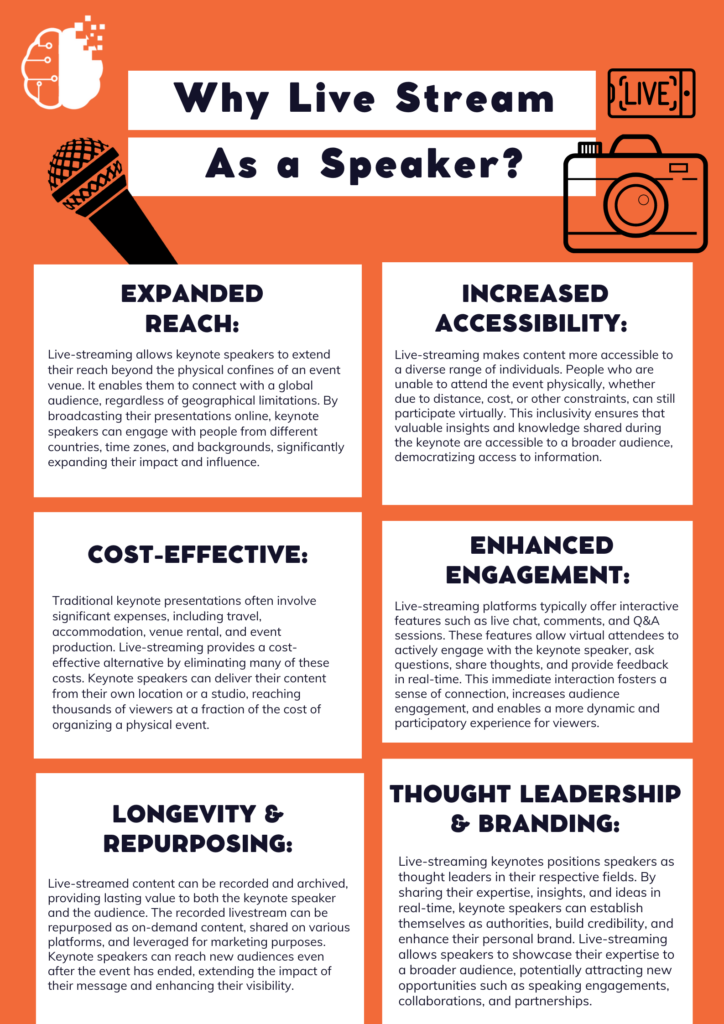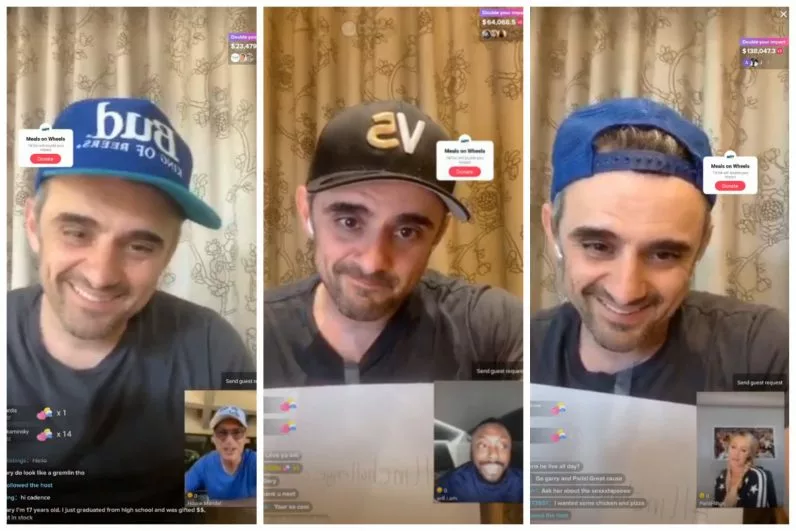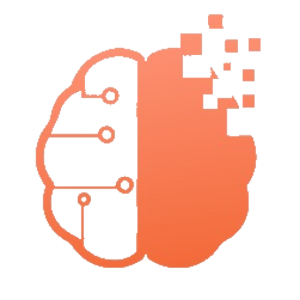As we plunge deeper into the digital age, the virtual stage has become as important, if not more, than the physical stage. Particularly for keynote speakers, the advent and rise of live streaming has been shaking the speaking industry.
With advancements in technology and the global shift towards digital platforms, live streaming has become an effective medium for communication and engagement. This real-time video broadcasting allows speakers to connect with audiences worldwide, fostering a dynamic, interactive environment unlike any other.
Live-streaming content has become increasingly important for keynote speakers due to its ability to reach a wide audience in real-time and provide numerous benefits. Here are some key reasons why live-streaming is crucial for keynote speakers:

Keynote speakers can leverage various types of livestreaming content to enhance their engagement with the audience and provide value beyond their main presentations. Let's explore each bucket of livestreaming content and why speakers should implement them:
Hosting live Q&A sessions allows keynote speakers to directly engage with their audience and address their questions, concerns, and interests. Q&A sessions create a more interactive and personalized experience, enabling speakers to provide real-time clarification, additional insights, and practical advice. It fosters a sense of community, builds trust, and allows the speaker to demonstrate their expertise while establishing a deeper connection with the audience.
Conducting live interviews with industry experts, thought leaders, or relevant individuals provides valuable content for the audience. Speakers can invite guests who bring unique perspectives or complementary expertise, amplifying the knowledge shared during the livestream. Interviews offer an opportunity for meaningful discussions, exploring different viewpoints, and encouraging the exchange of ideas. They also provide an occasion for networking, collaboration, and building relationships with influential individuals.
Live-streamed discussions or panels allow keynote speakers to engage in conversations with multiple participants, creating a dynamic and diverse learning experience. Speakers can invite fellow experts or professionals to discuss trending topics, industry challenges, or emerging trends. Panel discussions offer different perspectives, stimulating thought-provoking debates and encouraging audience participation through comments and questions. This format facilitates knowledge sharing, encourages critical thinking, and demonstrates the speaker's ability to navigate complex subjects.
Livestreamed workshops enable keynote speakers to provide hands-on, practical learning experiences to the audience. Speakers can conduct interactive sessions where participants actively engage in exercises, problem-solving activities, or skill-building exercises related to the speaker's area of expertise. Workshops allow for direct application of concepts, techniques, or strategies, giving participants a tangible takeaway from the livestream. Implementing workshops through livestreaming offers scalability, enabling speakers to reach a larger audience with their educational content.
Offering behind-the-scenes glimpses into the speaker's life provides a more personal and relatable connection with the audience. Livestreams showcasing the speaker's daily routines, preparation processes, or backstage moments humanize the speaker, fostering authenticity and building a stronger rapport. This type of content allows the audience to see the speaker beyond their formal presentations, creating a sense of connection, and strengthening their personal brand.
Speakers can showcase their expertise by conducting live demonstrations or presenting case studies. This type of livestreaming content allows speakers to illustrate practical applications of their knowledge or share success stories, providing real-world examples to inspire and educate the audience. Live demos and case studies demonstrate the speaker's competency, build trust, and offer actionable insights that the audience can apply in their own contexts.
Speakers can organize livestreamed webinars or masterclasses that delve deeper into specific topics. These longer-form sessions provide a comprehensive exploration of a subject, allowing the speaker to deliver in-depth content, share detailed frameworks, and provide step-by-step guidance. Webinars and masterclasses offer a higher level of educational value, attracting a dedicated audience seeking specialized knowledge and expertise.
Choosing appropriate live stream content for keynote speakers requires careful consideration of various factors to ensure relevance, engagement, and value for the audience. Here is a detailed strategy to help keynote speakers select suitable live stream content:

Live streaming also serves as an excellent personal branding tool. With live streams, speakers can showcase their personality, expertise, and values to their audience, fostering a strong, personal connection.

Leaders like Gary Vaynerchuk and Brené Brown effectively utilize livestreaming platforms to connect with their audiences and share their expertise. Gary Vaynerchuk frequently goes live on YouTube and Instagram, conducting Q&A sessions and delivering valuable insights on entrepreneurship and personal development.

Brené Brown engages with her followers through Facebook Live and LinkedIn Live, discussing topics like vulnerability and leadership. Livestreaming platforms allow these leaders to directly connect with their audience, fostering genuine interactions and creating an immersive experience for their followers.
The frequency of live streaming depends on various factors like your audience's preferences, your schedule, and the type of content. A standard recommendation for speakers is to livestream at least once every few weeks or once a month. Consistency is key in building an online presence and maintaining audience engagement. However, for speakers with busy schedules, even livestreaming once every few months can be beneficial. It's important to find a balance that aligns with their availability while still ensuring regular interaction with their audience. Ultimately, the key is to prioritize quality content and meaningful engagement over frequency, ensuring that livestreaming becomes a valuable addition to their speaking endeavors.
Live streaming offers keynote speakers a unique opportunity to engage with their audience on a more personal level. With careful planning and execution, it can significantly enhance visibility, impact, and revenue.
